Bricklayers Tool Kit
The bricklayer's tool kit must be used with great care and properly maintained, firstly, because of the safety aspect arid secondly, because the tools can be of great expense. When purchasing tools, consideration must be taken on how often the tools will be used. With every day use, the tools have to be made to be able to withstand the work. Often this is not the case with less expensive tools. Below is a list of the tools, how they should be used and properly maintained:
Brick Trowel
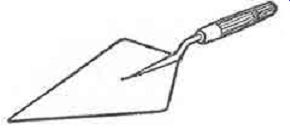
These came various sizes and shape ranging between ten and fourteen inches. One side of the trowel has a more rounded edge, this being for rough cutting, however, this use is not advised for the beginner. The measurements are the actual blade size, the width of trowel also varies and beginners will find a narrower trowel easier to use. The rounded side on the trowel makes it suitable for both left and right handed operators. When the trowel is not in use for a period of time, clean it off dry and apply a light coat of oil to avoid rusting.
Pointing Trowel

A smaller version of the brick trowel but with both edges being straight, these are used for certain types of pointing or to add a finish to the brick work and should be maintained as the Brick trowel.
Spirit Level

This will be the most expensive part of the tool kit, thus keeping the bricklayers work level (horizontal) and plumb (vertical). These also come in various sizes. The main size for everyday work is nine hundred millimeters or twelve hundred millimeters.
Boat Level

Like the Spirit Level above, it has two bubbles, (one for leveling, the other for plumbing) but is smaller. It is very handy for decorative panels and soldier courses.
Line and Pins
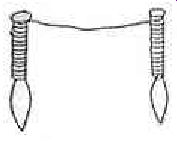
These are used when corners of the building have to be built to run in the bricks between. The pins are tapered at the ends to allow for inserting into joints. It is important that the line is kept free of knots and clean of mortar.
Corner Blocks
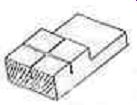
These are used in pairs as an easy method of holding the line up. These are inexpensive as you can make your own.
Tingle Plate

Another less expansive tool but of great use. II is used for holding the line up over long lengths of walling to remove any sagging.
Club (or lump) Hammer
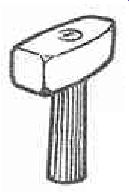
Used with either a bolster or chisel. It is essential that the head is secure and checked regularly to ensure it never comes loose. Always wear eye protection goggles.
Bolster
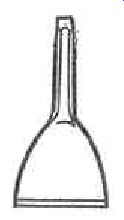
Used for cutting bricks. Eye protection must be used at all times it is used. The end should never be allowed to burr over. This is known as a mushroom and can splinter when being hit. The end should be kept free from mushrooms by a grinding wheel which also allows the culling edge to be kept sharp.
Cold Chisel

Similar to a bolster but with a smaller blade, used more for cutting into brickwork after it has been laid e.g. for letting in services. Again maintenance and safely procedures should be followed the same as for the bolster.
Hawk
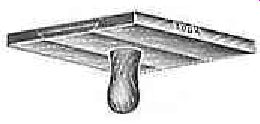
A small hawk is used when pointing a lot, and makes it easier to hold the mortar.
Gauge Rod
Inexpensive as you make it yourself. A length of timber with the vertical spacing of the bricks marked along one edge. Used when working from both ends of a wall to ensure that the courses are equal.
Brick Bat Gauge
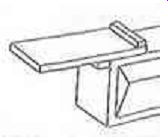
Another inexpensive tool which is able to be made. Easy to use when a lot of cutting is required and maintains a regular size to the cuts. The one illustrated is made for the three most basic cuts used. Half bat, three quarter bat and closer.
Brick Hammer and Comb Hammer

Two similar types of hammer, one with a fixed head, the other with detachable blades. When the teeth have worn down, the blades can be renewed. They can be used for a number of jobs:
i. tidying the edges of cuts to leave a clean edge
ii. for what is known as chasing, i.e. letting cables into walls before plastering
Again, safety is of the utmost importance. Goggles must be worn at all limes and hands and fingers must be kept clear.
Steel Tape
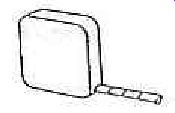
The types most commonly used by bricklayers these days. Very convenient size and is easily transported via the belt or pocket. When used in wet conditions it must be wiped after use to prevent rusting.
Jointing Tools
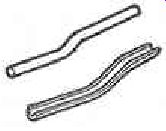
Used for putting a finish to the joints in brick work. A half-round joint which is also known as a bucket handle finish. Two types are shown, these can now be bought from shops but an old pail or bucket handle can be bent to a suitable shape.